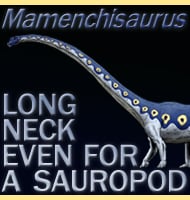In Depth
Along with Meganeura, Meganeuropsis was a griffinfly of the Paleozoic, and prooves that the giant griffinflies flew throughout the Permian period. The fossil of Meganeuropsis americana recovered from Oklahoma in 1940, features the largest complete insect wing ever found.
Further Reading
Further reading- The Lower Permian Insects of Kansas. Part 8: Additional Megasecoptera, Protodonata, Odonata, Homoptera, Psocoptera, Protelytroptera, Plectoptera and Protoperlaria. – Proceedings of the American Academy of Arts and Sciences 73(3):29-70. – F. M. Carpenter – 1939.









